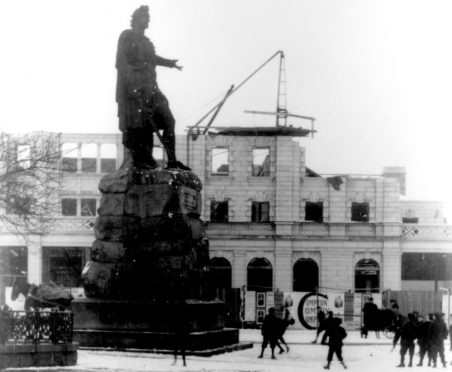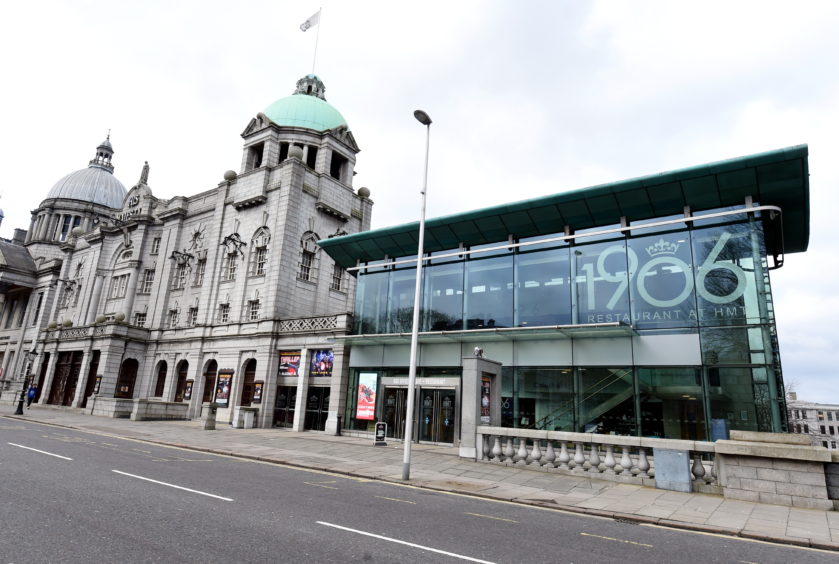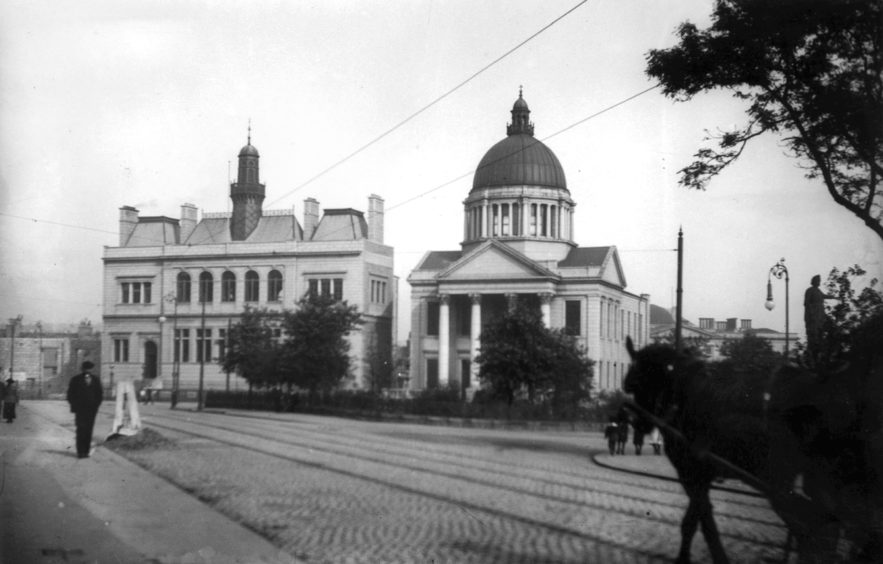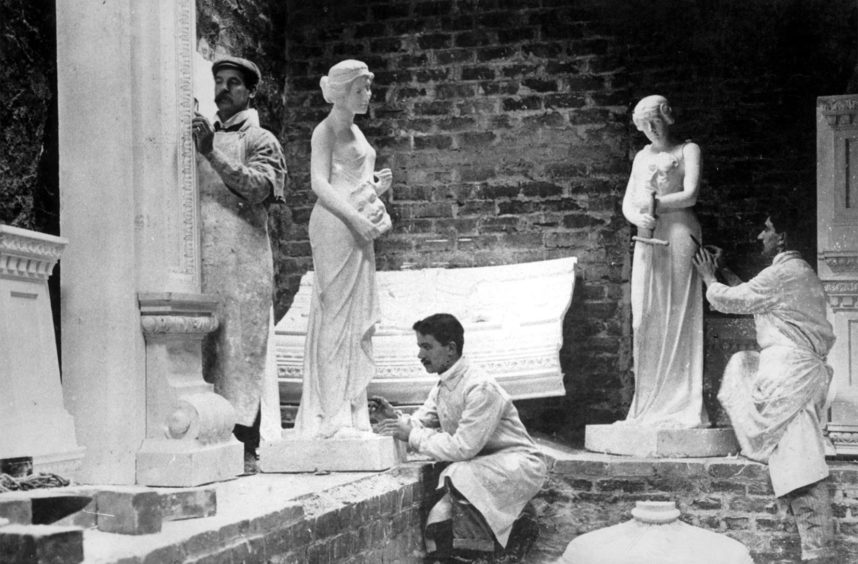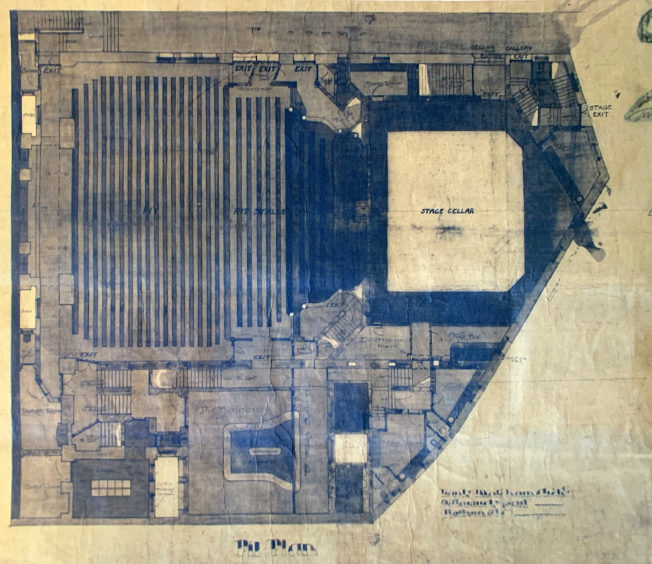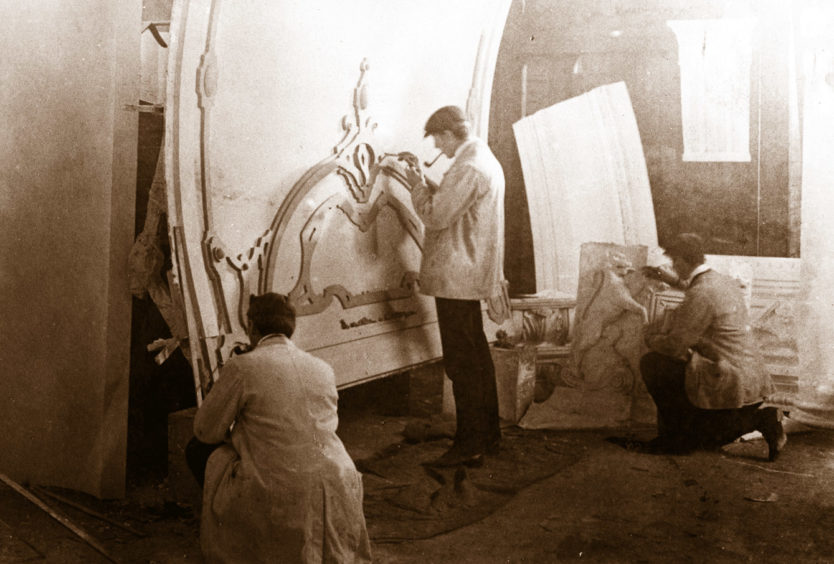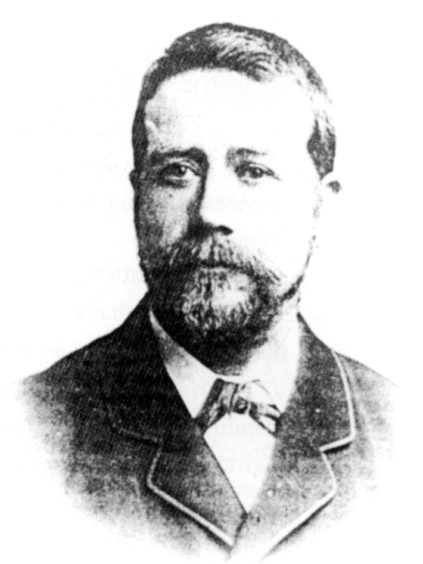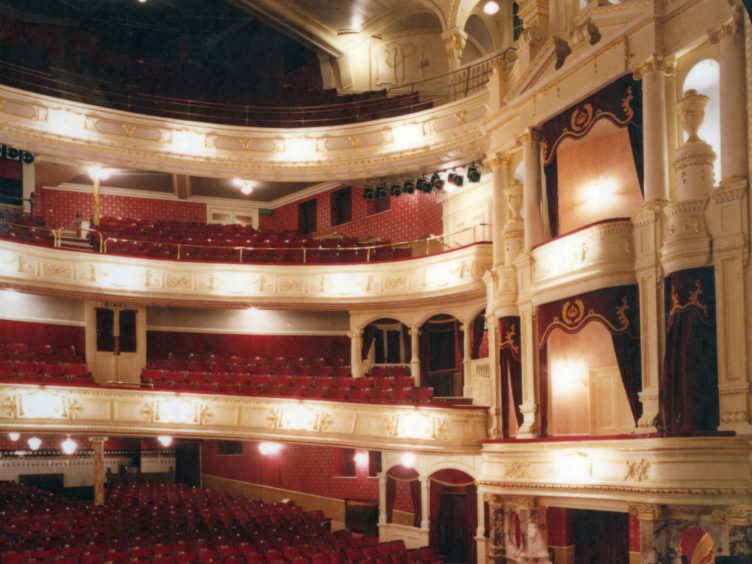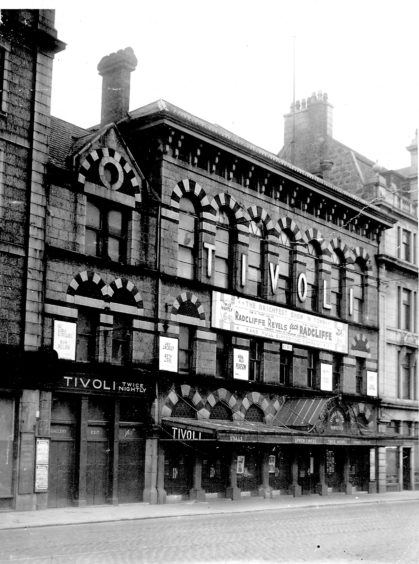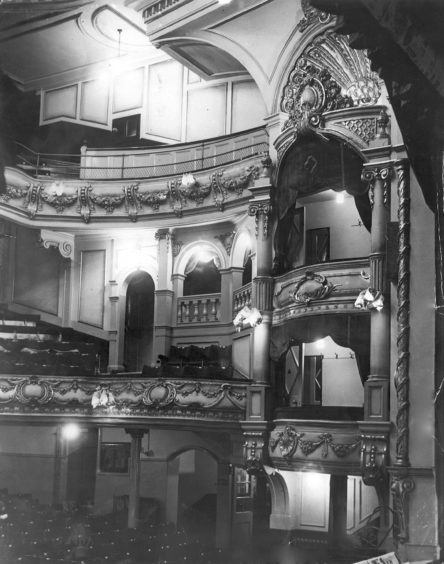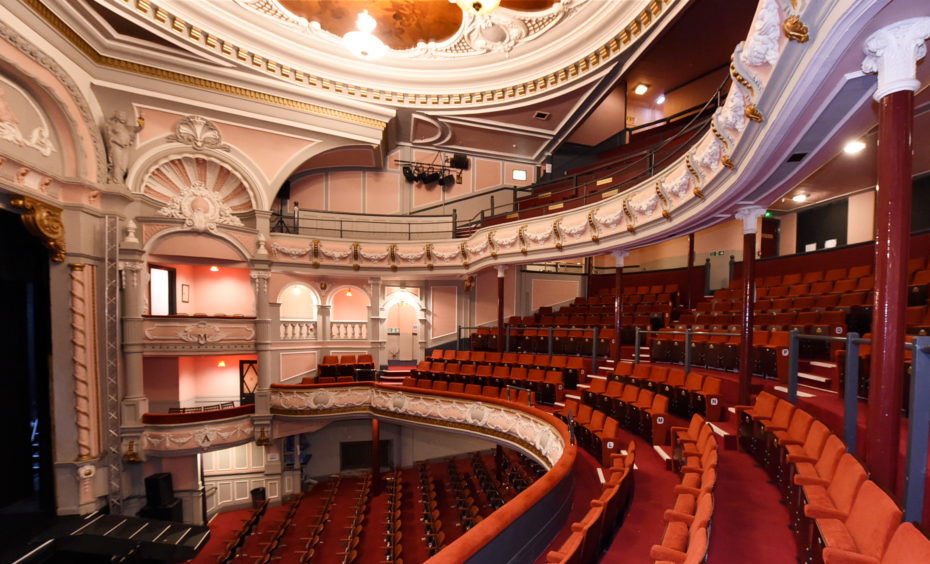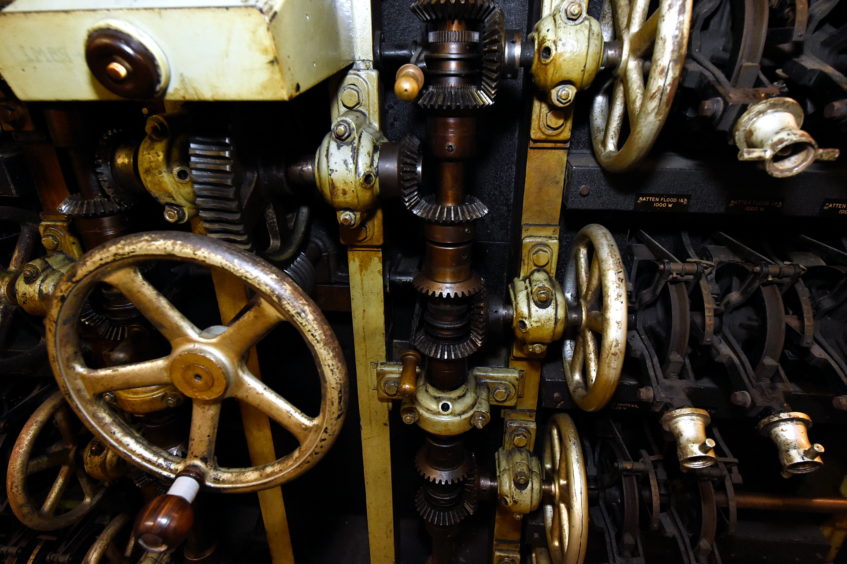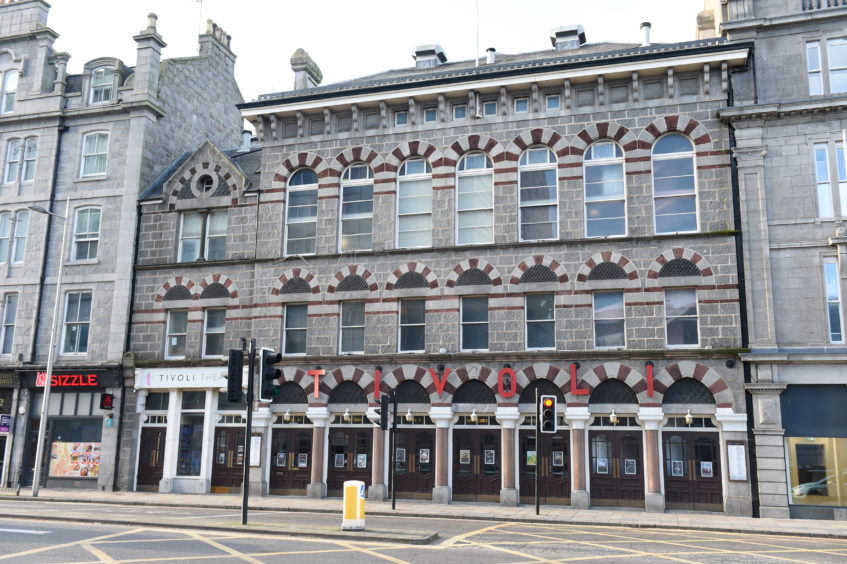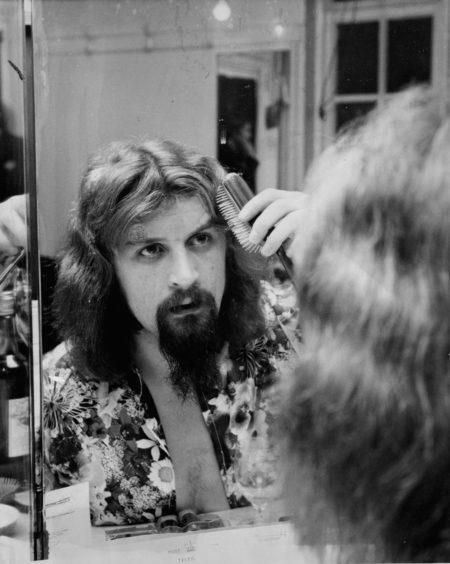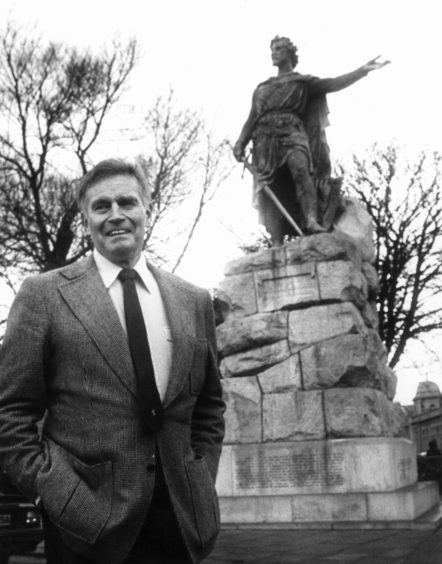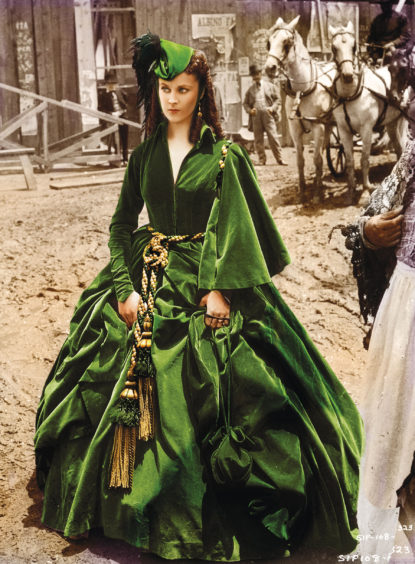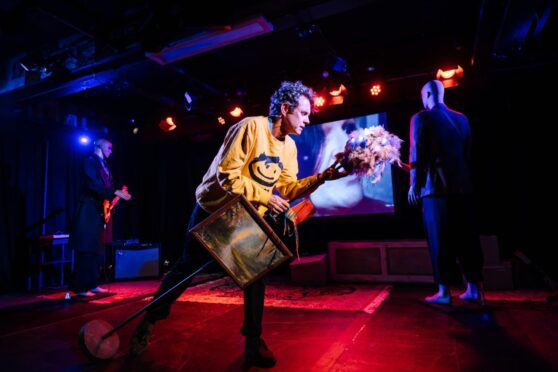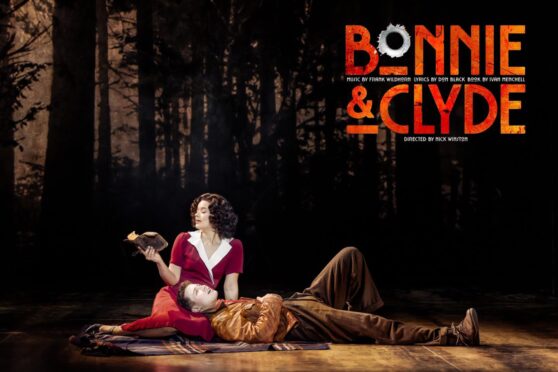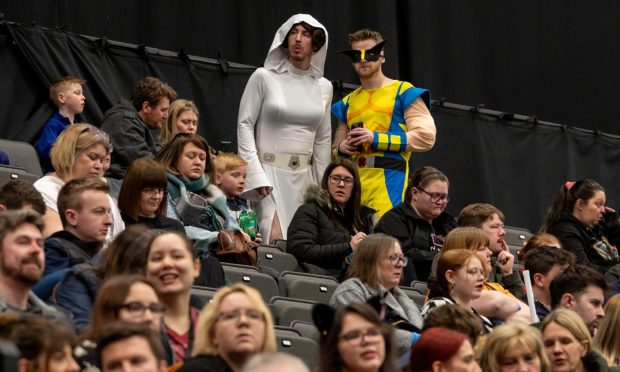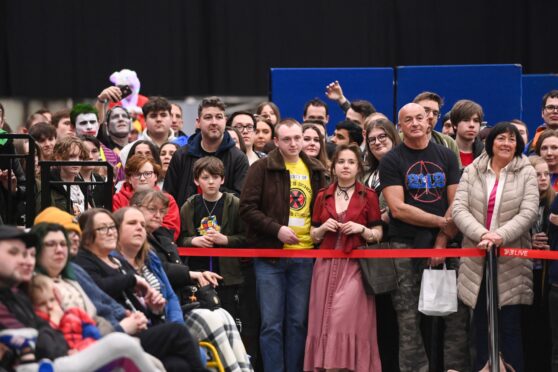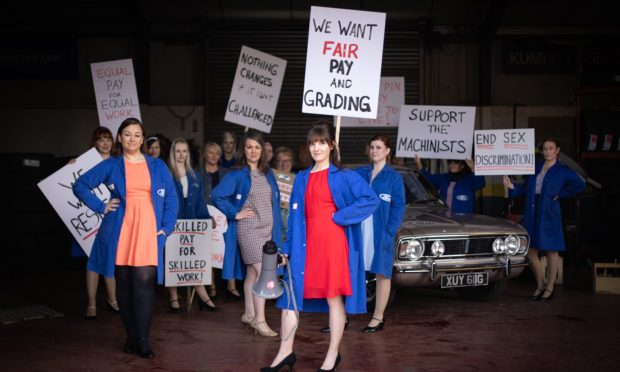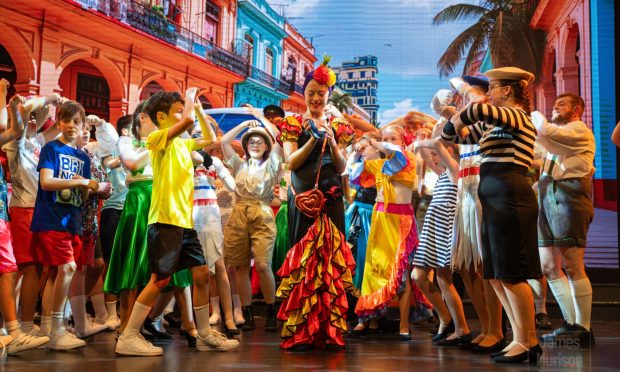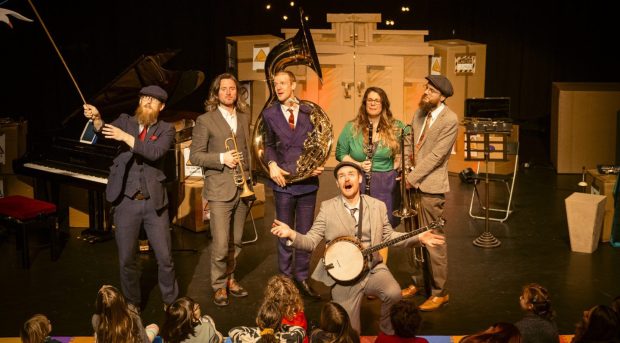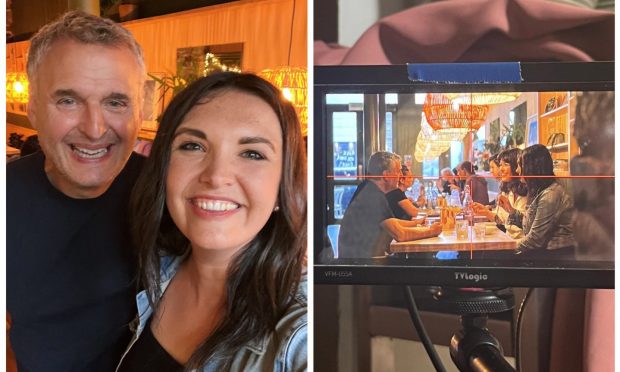His Majesty’s Theatre is an Aberdeen icon, standing proudly on Rosemount Viaduct, part of the trinity of “education, salvation and damnation” alongside the Central Library and St Mark’s Church.
But the imposing building we all know and love today might have looked very different.
Original plans by revered theatre architect Frank Matcham – who died on May 17, 100 years ago – were for a very different design when he first submitted them in 1901.
“It was a strange thing, with lots of pillars and twin towers at either end, but that was rejected by the planners and he was sent back to the drawing board,” said Alan Rennie, archivist for Aberdeen Performing Art.
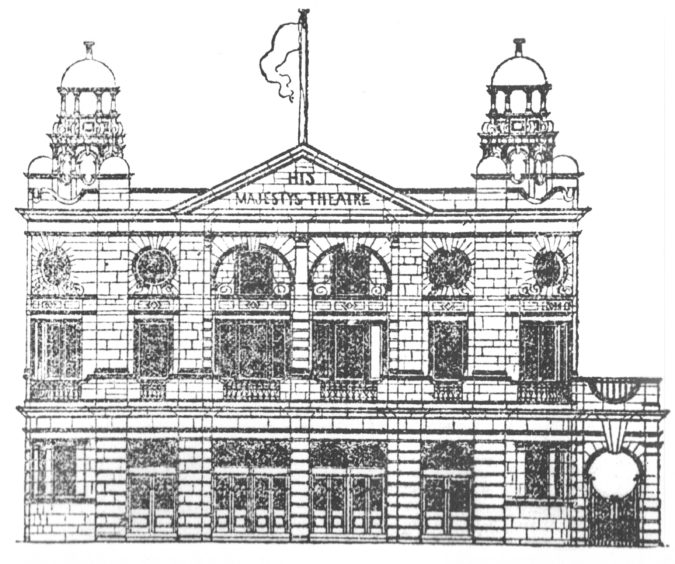
“So His Majesty’s could have looked very different, totally symmetrical and a bit odd. I don’t think it would have sat on the site very well.”
The plans the architect submitted next became the beautiful, soaring, granite-built His Majesty’s with its signature copper-dome.
It is now one of Britain’s treasured “Matcham theatres” standing alongside the London Palladium, the Hackney Empire, and the Glasgow King’s. And let’s not forget the Granite City’s own Tivoli Theatre, which, while not built by Matcham, was re-modelled by the London-based architect.
Matcham was the “go-to” architect for theatres at the turn of the century, which was why he was commissioned to build HMT by Robert Arthur, a theatre impresario who decided Aberdeen needed a bigger and better venue as the 1900s dawned.
It’s on a cliff that
just goes all the
way down from
the viaduct.”
However, Matcham had his work cut out for him in building His Majesty’s from scratch on a site that at first glance is the last place you would put a theatre.
“It’s on a cliff that just goes all the way down from the viaduct,” said Alan.
“His main problem was how was he going to fit a theatre into that difficult site.
“It was a fair undertaking as to how he could actually do it,” said Alan, adding part of the solution was to have the theatre stage two floors below ground level, unique at the time.
“But he was renowned for fitting theatres into all sorts or shapes and sizes.”
When HMT opened in 1906, at a cost of £35,000 but delayed by four years due to a shortage of Kemnay granite, it was a stunning addition to the cityscape – and one proudly built by local craftsmen.
“That is one thing to stress, that most of the work was done by local artisans from the actual building of it to the interiors including the plasterwork,” said Alan.
It was the distance from Matcham’s London-based operation which compelled him to use the Granite City’s home-grown talent.
The interior of His Majesty’s was equally attractive as the exterior, a symphony of Italian marble, polished mahogany, and elegant plaster decorations, with rich velvet drapes and seating against an off-white colour scheme.
A frieze of the “the Goddesses Of Drama” ran across the top of the proscenium arch and was created by William Buchan of Belmont Street. He also sculpted the statues of Tragedy and Comedy sitting above the boxes.
Alan said the style could be described as “as sedate Georgian with a touch of Baroque” from a designer, whose other theatre designs have included themes like giving an auditorium a circus feel, with elephants above the boxes, or a Roman look with chariots around the walls.
“His Majesty’s has a lovely, restrained auditorium from Matcham. There’s just enough glamour and splendour to make it look good,” said Alan.
It has a
stream
running
under it.”
“One thing Matcham was good at was sightlines in auditoriums.
“He used fairly new cantilever technology.
“Theatres of that period usually had pillars all over the place, but he managed to introduce a patented system to hold up the dress circle, upper circle and balcony above which gave excellent sightlines.
“No matter where you are in the theatre, you can see to the back of the stage.”
The challenges of the site made for some unique feature at His Majesty’s – not least that it has a river running underneath it.
“The Denburn was one of the problems he had to overcome and still runs underneath the corner at the back of the theatre,” said Alan, adding this quirk had been forgotten for many years until work on a new fly tower in the 1980s uncovered a culvert carrying the burn.
“So they had to put a new bridge in over the Denburn.
“You can sometimes hear it on a quiet day after a lot of rain in the corner of the theatre I inhabit.”
When it opened in 1906, HMT had a unique feature. The dress circle, where the wealthy and beautiful people of Aberdeen sat, was at street level. This meant the upper crust of the day could sweep out of their carriages at the front door and straight into their plush seats without having to climb any stairs.
Alan said: “There are pictures knocking around of people in their carriages being met at the front door by the doorman and pageboys, then escorted in. The carriages then used to go and park up roughly where Victoria Park is now and the little page boys would be sent up there to get them all back in time to pick up the posh clientele.”
The hoi polloi, though, were not quite so well-catered for. The cheap seats in the balcony had their own entrance and things were a little less refined for the working folk.
“Back in Matcham’s day the classes were certainly kept very much apart, so he managed to introduce separate entrances at the front,” said Alan.
“The posh folk went through the main door and the balcony entrance was further apart.
“You tramped all the way up a concrete stairway to get to the very top.
You were literally
pushed up with a
brush-like contraption
to fit more people in
“Up in the balcony there were benches, you found yourself a space with your family and you were literally pushed up with a brush-like contraption to fit more people into the building. You basically sat there and lent on the knees of the person behind you… and then smoked. It must have been fairly horrendous up there.”
The separation of the rough and smooth in Aberdeen society continued in the stalls where a wooden fence kept the workers in their place at the rear of the auditorium away from all the finery of the “orchestra stalls”.
Another quirky aspect of His Majesty’s is that the steep drop from the viaduct meant that the stage is above street level.
Matcham got round this by installing a lift to hoist scenery and props to the backstage area for the get-in of productions.
Alan said: “Scenery arriving at the Joint Station would be taken up to the theatre on handcarts and then loaded onto the lift and hand-winched up to the stage level.
“It would have taken some time in those days to get things up and down. I think that’s unique in British theatre.”
Strange noises and
odd sightings
troubled the theatre
It was a highly dangerous contraption, which led to His Majesty’s having its own ghost, Jake.
In 1942 a circus was performing at the theatre and horses were being hoisted up to the stage door, but was overloaded.
John “Jake” Murray leaned over to apply the brake but was decapitated by the spinning winch-handle. Soon after strange noises and odd sightings troubled the theatre – and still do, according to some.
Alan’s personal favourite aspect of Matcham’s theatre is the view from the stage.
He said: “You just think ‘this is really lovely and quite magnificent’.
“When we have companies come into the theatre stand on the stage the first thing they usually say is ‘isn’t this gorgeous, we weren’t expecting anything as lovely and pristine as this’.
We are
lucky to
have it.”
“Despite all the changes over the years, the original concept by Frank Matcham has remained intact. It stands as an architectural gem and an important contributor to Aberdeen’s cultural heritage.
“We are lucky to have it.”
Aberdeen’s other Matcham theatre
Frank Matcham’s other gift to Aberdeen was the Tivoli.
The Guild Street theatre was actually the city’s original Her Majesty’s, before the Rosemount Viaduct building was commissioned to create a bigger venue.
Mark Fox, chairman of The Frank Matcham Society, explained the architect worked his magic on the Tivoli twice, breathing new life into a building which was built in 1872 by architect CJ Phipps.
“The Tivoli was a major reconstruction on Matcham’s part and he visited twice – having in between those two reconstructions built His Majesty’s entirely,” said Mark.
“Aberdeen was obviously an important place to him.
“In 1897, Matcham went in and did some alterations to the (Tivoli) auditorium. It was a major rebuild in 1909, increasing the capacity and changing exits and allowing boxes, to create a greater intimacy in the auditorium. It operated as a music hall then.”
Mark believes Aberdeen is very fortunate to have not one, but two Matchams to its credit.
“They are both prime examples of his master’s art. The Frank Matcham Society had a trip up in 2016 so I have seen them both and they are such pretty interiors. There’s the Romanesque finish of His Majesty’s compared to that very delicate cake icing, Baroque, Tivoli auditorium.”
Today Matcham theatres around the country are treasured – each one distinctive in architectural style and tone – although they weren’t built to last.
“When the buildings went up, because they were very commercial ventures, they were seen as ephemeral buildings,” said Mark.
“If a building didn’t work, the developer would think nothing of knocking it down and doing something else. If it did work, the chances are they would knock it down to build something bigger so they could make even more money.”
London-based Matcham was a prolific architect, creating some 80 theatres and re-modelling a further 80. Today only 26 survive, along with HMT and the Tivoli.
Mark said: “We have to put our hands out and say very much thank you to bingo.
“Because if bingo hadn’t take over the Tivoli, it probably wouldn’t have survived. Then it had all those years, from 1977 when it still stood empty,” he said praising today’s work to re-open it and build it up.
Those Matchams which still stand are loved for a reason, said Mark.
“He knew what he was doing. He was being appointed by commercial operators to create these spaces to make money, but he understood they would only work if they pleased everybody involved.
“He had an understanding of what the performer needed, so the acoustics in all the venues are very good, so performers love them. And the designs always ended up with a level of intimacy between the stage and the audience that no other architect has managed. He made sure every seat in the house had a good view of the stage.
“His buildings have a magic about them. You don’t need to be a theatre lover to go into one of Matcham’s buildings and appreciate what he created. If you ask anyone what their image of a theatre is, even if they have never been in one, they will describe a Matcham theatre.”
Starry, starry nights…
His Majesty’s is one of the stars in Frank Matcham’s legacy for British theatre.
And over its long history, HMT has attracted countless stars of stage and screen – including those who can justifiable be called Hollywood legends.
Vivien Leigh, of Gone With The Wind fame, starred in a production of Bernard Shaw’s The Doctor’s Dilemma in 1941, while Tyrone Power starred in the same writer’s the Devil’s Disciple in 1956, billed in the Evening Express advert as “a personal visit of the famous American star”.
One of the biggest Hollywood hitters was Charlton Heston, who arrived at His Majesty’s in 1988 to star in A Man For All Seasons.
Sean Connery also graced the stage – in the chorus of the musical South Pacific in both 1953 an 1954 before he picked up his licence to kill as 007.
Other well-known faces to have peformed at the theatre over the years include, Alec Guinness, Noel Coward, Eric Sykes, Sade, Lulu, Rowan Atkinson, Andy Stewart and Billy Connolly, to name but a handful.
